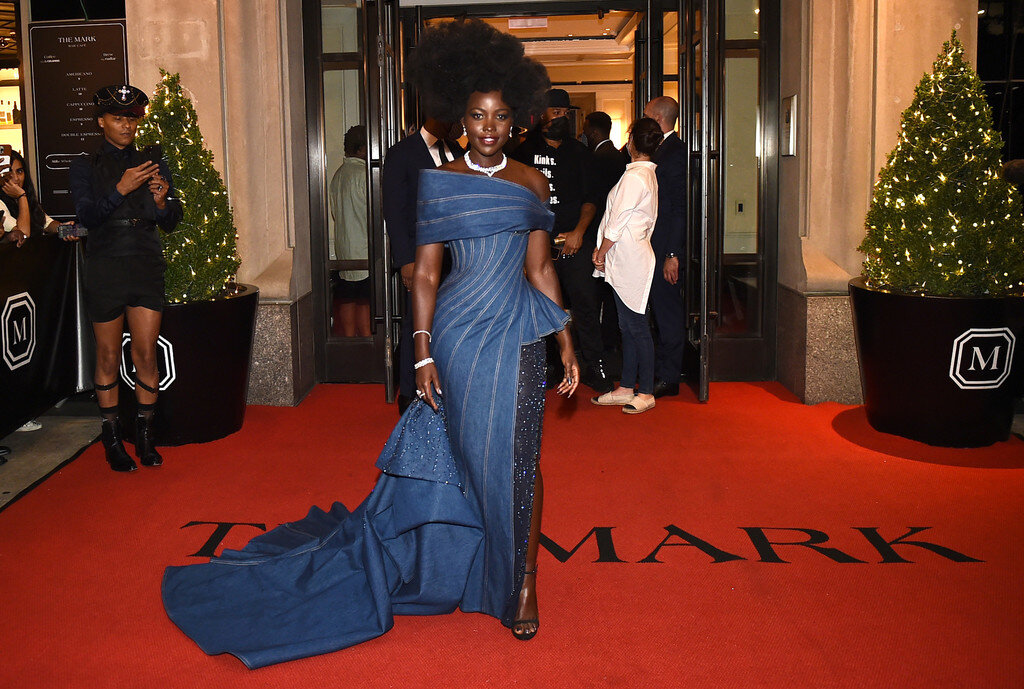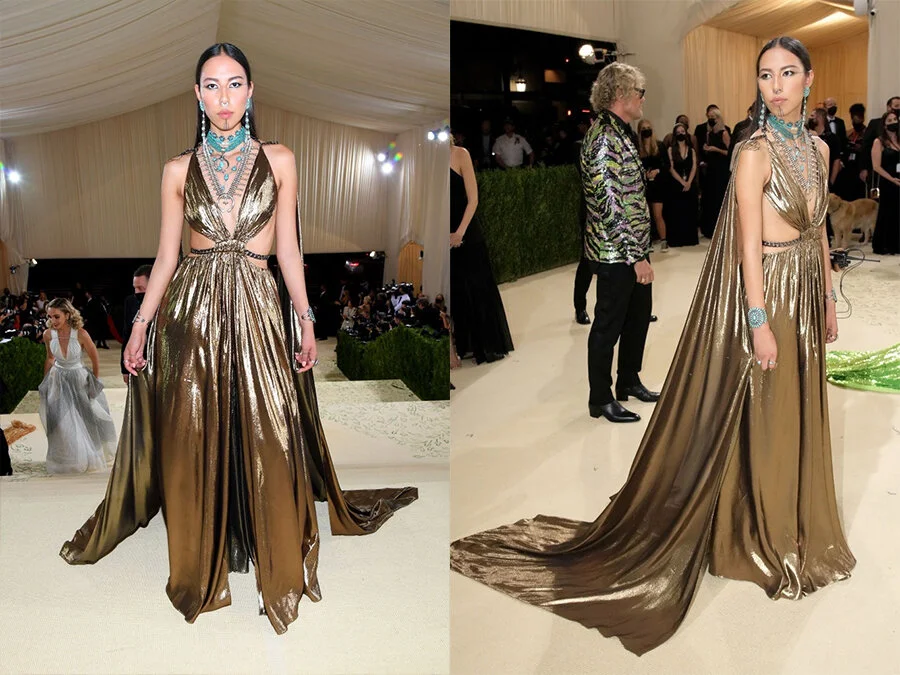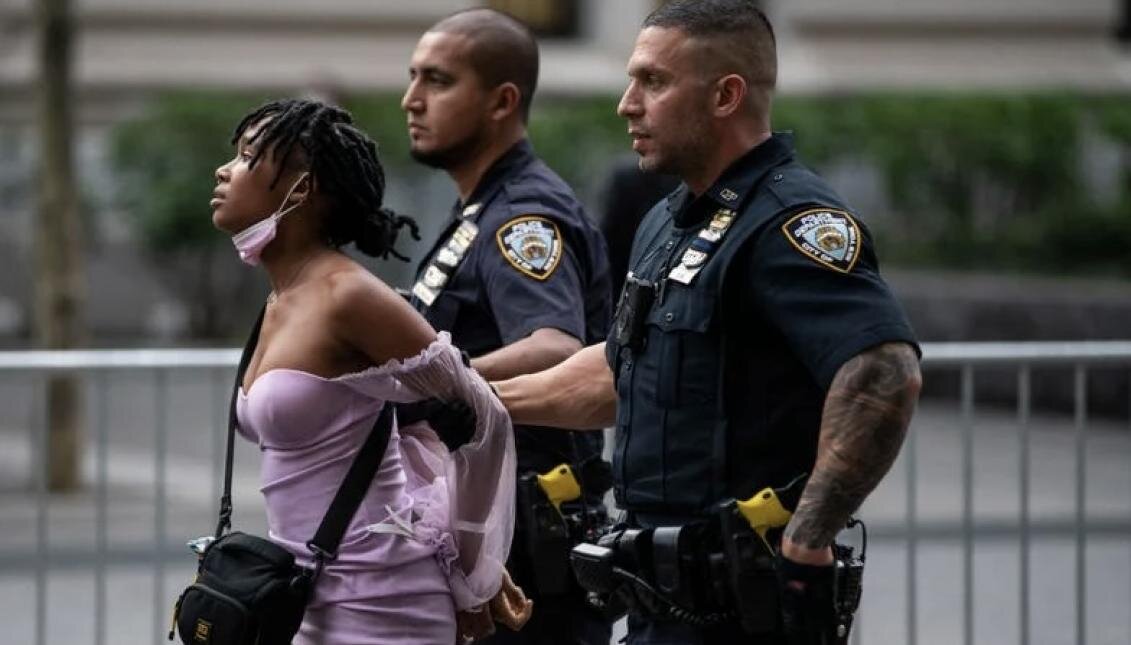Cover image taken from ArtNet News.
The Met Gala is an event that is held annually to raise money for the Metropolitan Museum of Art in New York City. This event is not only exclusive but extremely expensive, ticket-wise; this year's prices were over $30,000 per ticket. Designers all over the world dress celebrities as their muses to showcase their fashion at this fundraising event. Past Met Galas, which started to get mainstream attention in the 2010s, were themed:
2016: “Manus x Machina: Fashion in an Age of Technology”
2018: “Heavenly Bodies: Fashion and the Catholic Imagination”
2019: “Camp: Notes on Fashion”
This year’s theme was “In America: A Lexicon of Fashion,” which was more broad than others have been in the past. Overall, the event was disappointing because arguably, not many of the guests followed the theme very well. Additionally, I felt that an American-centered theme was not expansive enough to encompass all of the different cultures that reside in America. Much of American cultural phenomena or creations in history tend to have appropriated other cultures. Given this, I personally wish that the event organizers had come up with a more exciting, creative theme like the ones listed above. Nonetheless, the only things that do come to mind for me when thinking about American sentiments in fashion are Old Hollywood, denim, pastoral-western influences, and patriotism.
Although the invitees and panel of hosts (Naomi Osaka, Timothée Chalame, Billie Eilish, and Amanda Gorman) seemed to promote diversity, the way in which the protest outside of the event was handled itself showcased how America typically chooses to operate when it comes to the treatment of Black and Indigenous People of Color (BIPOC). As a person who adores and appreciates fashion, the Met Gala is usually an event that I am excited about; but as a Black person, the situation that occurred outside of the event this year is something that is difficult for me to ignore.
I could comment about how many of the looks and outfits from this year’s MET Gala were extremely underwhelming compared to those of the past; however, I found the beauty in this year’s theme through those who showcased their own cultures that reside in the makings of America. For example, despite there being a range of mixed opinions (including mine) on Rihanna’s Balenciaga Couture outfit this year, the inspiration itself carried great significance on how she wanted to represent Black people through wearing a silhouette of a black hoodie— a clothing item that is often used to demonize Black people in America. In an interview with Revolt, she stated, “Well, I wanted a look that seemed very powerful, yet feminine, yet like a Black hoodie, which is usually the thing that we are incriminated by as Black people.”
I enjoyed Lupita Nyong’o’s look – a Versace denim paneled and beaded dress, which I felt fit the theme generally well as Americans do tend to wear denim often. Her inspiration for her hair look was from Lorna Simpson, a Brooklyn conceptual artist who often depicts Black women’s hair textures and plays with its gravity defying qualities. Lupita’s hair stylist, Vernon Francios stated: "Her take on hair textures is powerful, and I wanted to imitate the effortless wave and movement that she conveys in her work."
Image taken from Zimbio
Others that looked stunning and fit the theme were Rosalia in Rick Owens & Jennifer Lopez in Ralph Lauren in their Western takes, and Barbie Ferreira in Jonathan Simkhai in a pearled dress that channeled old Hollywood glamour. However, I think that someone who deserved more media attention and praise was Quannah Chasinghorse, Indigenous model and activist, who showed up wearing a Dundas gorgeous gold dress with turquoise jewelry that was native to her culture. America has been founded on genoicide and eradication of Indigenous peoples, and sequentially built up by Black and Brown people who were enslaved and/or were migrants that were manipulated. Quannah’s look was refreshing to see and have showcased in general, but especially in such a space where she is not the majority and the theme of the event has historical ties to the disruption of her people and culture.
Image taken from National Indigenous Times
This year’s theme was a perplexing one because of the evident strife that America has perpetuated in its history and that has also become undeniable in recent years. The whopping amount of money spent on this event is appalling, which in turn brought in protesters who rightfully used their first amendment right to address the police and racial issues, such as housing crisis rights, in New York City.
The abolitionist group that was present was related to the hashtag #FireThemAll, referring to their call to abolish the police system. Many people in the past year have adopted sentiments about the police system and how issues within communities should not be handled solely by the police, especially given the ridiculously large amount of funding given to policing branches. This is due to the fact that other departments, such as social workers and counselors (who have undergone training and education on social issues), could benefit from such funding. Thus, the protesters planned to interrogate why the NYPD is receiving over $11 billion for operations when this money should be reallocated to Black and Brown communities that need support.
Ella Dior, an abolitionist who held a mega-phone and spoke their mind out to spectators outside the event, as well as to those inside walking the red carpet, went viral online. They raised plenty of integral questions, demanding for change to be made. Sound bytes can be heard of them stating, “Black and brown people are on the brink of houselessness. We cannot go back to normal. Where was your rage last year?” Ella raised questions of last year to address the seemingly large uprising in the Black Lives Matter movement all over the country after not only the murder of George Floyd, but the murders of hundreds of Black and brown people at the hands of police. I say seemingly because much of the uproar that was sounded in the summer of 2020 has plummeted. Not much has changed, and as Ella stated, “Our people are still dying!” Ella spoke on behalf of their group and their people, “We demand free housing, we demand all political prisoners to be freed, we demand justice for our people.”
In response to their protest outside the Met Gala, Ella and their fellow comrades were taken into custody by the police for over 12 hours. Not only were they arrested, but they were brutalized; bloody noses and forceful arrests can be seen in pictures and video footage.
Image taken from Al Día News
In an interview with Now This News, Ella Dior spoke about the events that transpired. They emphasized that the organizers were peaceful. They wanted to make sure that the message was spread that Black Lives and Black Trans Lives still matter. After referencing the injustices of this past year, they explained that over 33 (documented) Black trans women were killed this calendar year. In addition, recent months have brought about the abrupt end to protective systems put into place during the height of the COVID-19 outbreak. They explain that the “eviction moratorium has ended... homeless people living in COVID hotels are being displaced and kicked out without notice.”
Ella explained how people outside the Met museum cared more about what their favorite celebrity was wearing for the Gala, than the liberty of the lives of Black, brown, and trans people. They challenged the entire Met Gala in saying that the event has the resources and privilege to “organize,” yet don’t want to give and ensure that Black lives are safe and supported.
Additionally, Ella criticized the “Peg The Patriarchy” writing on the outfit worn by model and actress Cara Delevingne, and the “Tax The Rich” dress worn by Congresswoman Alexandria Ocasio Cortez. These dresses were praised throughout the night because of their boldness in calling out American tropes, but although their intentions were in the right place, their execution has been deemed as somewhat lazy or meaningless, as it lacked discrete action.
“Wearing ‘Peg The Patriarchy’ and ‘Tax The Rich’ doesn’t do anything for us. It’s gonna take a lot of sacrifices, but we’re all willing to take those. Let us unite. Let us stand up together. Let us fight,” affirmed Ella.
A proverbial seat (which a table specifically, at the Met Gala is usually set at $275,000) at the table is not even what the protestors were fighting for! Their focus was on basic human rights, survival, under a government and economy that has been structurally built without marginalized groups in mind, but rather in spite of them.
I know that there are people that would disagree with my opinion and rebut by saying that what happened outside of the Met Gala had nothing to do with the event or what went on inside of it, but the two are entirely correlated. The issues of Black and brown people losing their homes, being on the brink of homelessness, and losing their lives are due to capitalism and the way that wealth is being accumulated predominantly by white people at the expense of BIPOC communities. Within New York City alone, one can see how redlining has affected neighborhoods of color (i.e. Chinatown, The Bronx, and parts of Harlem), causing them to be treated extremely differently in certain aspects such as sanitation and infrastructure, compared to neighborhoods that are affluent and white like the Upper East Side or Williamsburg, Brooklyn. New York City fundraises every year for the Metropolitan Museum of Art, where artists and designers alike can flaunt their wealth, yet just some neighborhoods away, people struggle to live in poverty.
This is a crucial conversation to focus on. Such conversations should be discussed more in classes and in social groups. Not only should they be brought up, but plans of action should be displayed. Many campus groups have already started the work, and Pass The Mic and Black Trans Abolitionists are examples. Yet, The Met Gala is just one example amidst several other public events in which these power structures are annually perpetuated.


